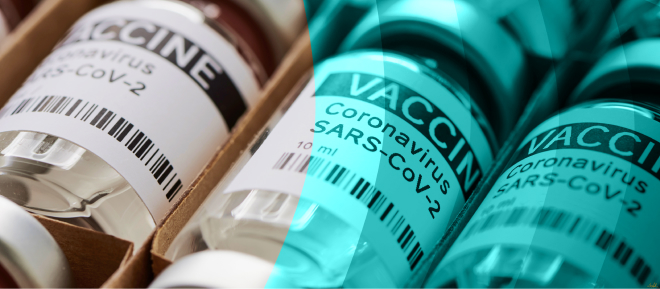
22 Jan First lessons learned from COVID-19 vaccination in Spain
The mass scale roll-out of vaccination programs across Europe brought us a glimmer of hope that the end of the pandemic might be in sight. However, with hope came new challenges. By the end of January, COVINFORM will publish the first bi-monthly report combining information about vaccination programs and misinformation and challenges surrounding them. In this blog post, one of the consortium partners, SAMUR-Protección Civil – a pre-hospital emergency service, outlines the issues that public authorities encountered with the launch of the vaccination program in Spain.
EU and non-EU countries have coordinated the purchase of vaccines from companies that have the most advanced and promising products.
The arrival of vaccines at their destination country requires a logistical process that manufacturing companies, airlines and governments are taking care of. Given the need for very low-temperature storage of the Pfizer/BioNtech vaccine, it is necessary to have adequate storage space in the city where the supply arrives, or quick access to the city where the vaccines are stored and from which they are distributed.
COVID-19 vaccinations in Spain
In Spain, as in other countries, a vaccination plan has been developed with special attention to the population groups it targets in different phases. In each province or region, there should be a storage space with sufficient logistical capacity. Until now, state bodies and security forces have collaborated in managing logistics.
Vaccination centres (nursing homes, socio-health and medical centres) aimed at the population targeted for vaccination in the early stages have been contacted by the authorities well in advance. This was necessary in order to have enough time for citizens – and their carers when citizens have a restricted capacity – to receive information and sign the consent for the administration of the vaccine.
However, specific incidents have occurred in the distribution and administration of vaccines that we have to learn from so that they are not repeated:
- Administration to relatives of the people of the group to which they were directed, affecting the criteria of distributive justice.
- Lack of training of the health worker administering the vaccine, which has led some people to receive the entire vial instead of the fraction corresponding to an individual dose.
- Inability to administer all the vaccines due to excess doses arriving or because the number of people estimated or committed did not turn up to be vaccinated. In the case of the Pfizer/BioNtech vaccine, this implies the loss of the vaccines.
Most likely the first two have been isolated incidents that, with adequate control, training and information have a low risk of reoccurring. Regarding the third, it is necessary to dedicate sufficient personnel to the coordination tasks between the centre where the vaccines are administered and the logistics warehouse where they are stored. When vaccination targets residents in nursing homes or socio-health centres, the risk of not being able to administer all the vaccines is lower, but the risk increases with the number of health care personnel willing to be vaccinated. There will be a much higher risk of vaccine loss when vaccinating other risk groups such as the elderly, or people with chronic diseases that are self-employed and live at home, and who, for various reasons, might not attend their appointment in the vaccination centre.
An opportunity to limit this risk is to take advantage of the technologies allowing to mass-organize pre-appointments and to be confirmed with an individual acceptance from each user. However, these systems have to take into account the possibility that a person might be part of multiple different target population groups to be vaccinated and should not be vaccinated twice. Furthermore, it is necessary to avoid that certain groups have more difficulties in accessing vaccines, such as health workers from private healthcare facilities or local administrations, etc.
To optimize the delivery of vaccines, there is a need for better coordination in distribution and storage. A fast and efficient vaccination plan is crucial for coming out of the COVID-19 pandemic, making vaccine delivery logistics a top priority and a shared concern amongst EU members.
Author: Alberto Hernández Tejedor, SAMUR
